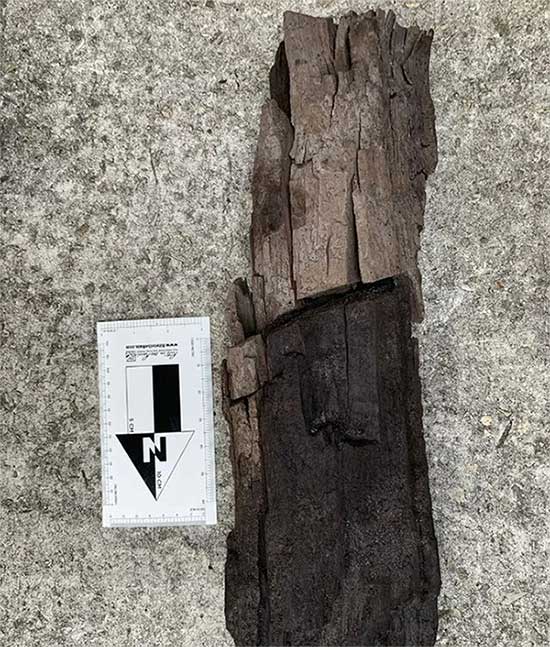An ancient forest has been discovered nearly 6 meters underground in an area that has not seen any large trees for tens of thousands of years, only shrubs and low vegetation.
British archaeologists have announced the discovery of a 15 to 30 million-year-old ancient forest in the Falkland Islands, a British Overseas Territory in the South Atlantic that Argentina also claims, referring to it as Malvinas, where no large trees have grown for tens of thousands of years, apart from shrubs and other low vegetation.

A panoramic view of the Falkland Islands showing its windy, treeless landscape – (Photo: Zoë Thomas/Southampton University).
The forest was discovered at a depth of nearly 6 meters underground when tree trunks were unearthed from peat layers at a construction site near the capital, Stanley.
Dr. Zoë Thomas, a geophysics lecturer at Southampton University in the UK and the lead author of the study on Falkland/Malvinas, stated that this discovery is quite unusual because what people know about the islands is that it is a very windy and barren place with no trees.
Dr. Thomas and her colleagues visited the site and began collecting the aforementioned large logs. She noted that the remains of the trees were preserved so well that they looked like driftwood.
The Sanfordiacaulis densifolia trunks were wrapped in over 250 spirally arranged leaves. This unique preservation resulted from earthquakes in a 352-million-year-old lake system, now located in New Brunswick, Canada.
The logs and peat samples have been transported to a laboratory at the University of New South Wales, Australia, for analysis. Scientists are using electron microscopy to reconstruct highly detailed images of the wood’s cellular structure.

A 15-30 million-year-old log, perfectly preserved – (Photo: Zoë Thomas/Southampton University).
According to Dr. Thomas, the presence of tree fossils indicates that this island once had a temperate rainforest, a completely different ecosystem compared to the island’s current environment. The story of this forest even dates back further than what researchers initially thought.
The trees were too old to be dated using carbon-14, a method that can determine the age of organic material up to 50,000 years old. The international team of scientists turned to the pollen grains and tiny spores found in the peat to find answers.
The pollen record led to the conclusion that the tree trunks and branches are 15 to 30 million years old. This suggests that the climate in the Falkland/Malvinas Islands millions of years ago was wetter and warmer than it is today.
Michael Donovan, the director of the plant fossil collection at the Field Museum in Chicago, USA, stated that the Falkland/Malvinas Islands are now entirely grassland and lack native trees. The fossilized pollen, spores, and wood in the study paint a very different picture of the ancient environment, providing direct evidence of the presence of cool, moist forests here.
An Important Site for Climate Change Research The research indicates that the exact reason why trees no longer grow on the Falkland/Malvinas Islands is still unclear, as they thrive at similar latitudes in South America. Both experts believe that strong wind climates and the acidic peat soil there could be contributing factors. These characteristics also make the Falkland/Malvinas Islands an important site for climate change research in the Southern Hemisphere. Dr. Thomas added that the prevailing westerlies could influence Antarctic ice, atmospheric circulation, and rainfall patterns, with the islands being one of the few land masses in their path. Understanding how these winds strengthened or weakened in the past, given the islands’ proximity to Antarctica, could help predict future changes in climate. However, according to Dr. Thomas, these islands are unlikely to soon see the return of forest landscapes. She stated: “Current forecasts suggest that this area will be warmer but also drier, raising concerns about the risk of peatland erosion.” |


















































